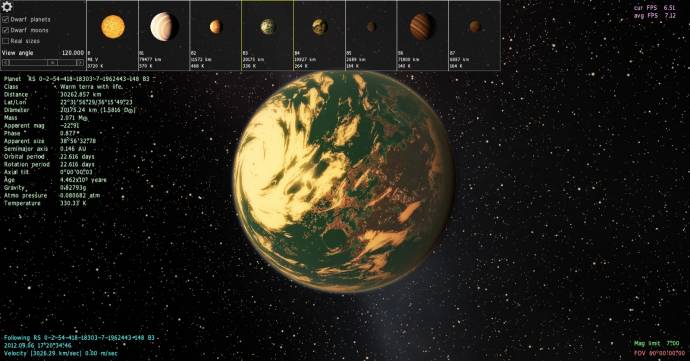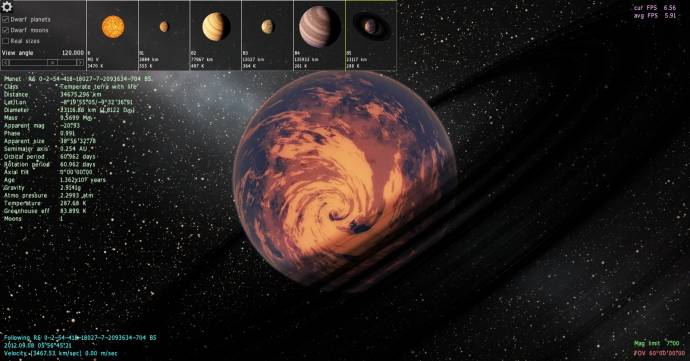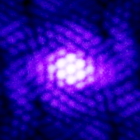|
Planet Varieties
|
|
| Ignuus66 | Date: Saturday, 12.01.2013, 01:45 | Message # 16 |
|
Space Tourist
Group: Users
 Hungary
Hungary
Messages: 28
Status: Offline
| Rouge planets perhaps? I saw it in the planned features and It does not seem difficult to implement, although I am probably wrong in this regard. They have been proven to exist though.
|
| |
| |
| Jabberwockxeno6109 | Date: Monday, 14.01.2013, 21:07 | Message # 17 |
|
Space Pilot
Group: Users
 United States
United States
Messages: 85
Status: Offline
| Still think there should be heavily volcanic planets.
Aren't most planets that are young more or less lava planets?
|
| |
| |
| Spyro | Date: Thursday, 14.02.2013, 21:17 | Message # 18 |
 Explorer
Group: Users
 United States
United States
Messages: 162
Status: Offline
| I'm seeing lots of

And

And no Earth-like Terras. I find that odd.
I'm back, but am I here to stay? Hopefully!
|
| |
| |
| Flynn | Date: Thursday, 14.02.2013, 22:07 | Message # 19 |
|
Observer
Group: Users
 United States
United States
Messages: 11
Status: Offline
| Quote (Jabberwockxeno6109) Still think there should be heavily volcanic planets.
Aren't most planets that are young more or less lava planets?
My Astronomy and limited geology is a bit dated, but I believe you are correct. However the current theory is that this would be relatively mid-late in the development phase where there are many small bodied objects littering the orbital field, colliding with one another frequently; subsequently heating up the large bodied objects, causing the elements and metals to separate and cores to form where the surface soon cools. (in terms of Billions of years)
PC: Intel Core i7 950 3.3 Ghz (3.02, 4Gb DDR3 RAM, ATI Radeon 6800 Series 1Gb
Pilot, stargazer, and future cosmonaut extraordinaire!
|
| |
| |
| Watsisname | Date: Friday, 15.02.2013, 05:33 | Message # 20 |
 Galaxy Architect
Group: Global Moderators
 United States
United States
Messages: 2613
Status: Offline
| Yep, you pretty much nailed it. Terrestrial planets are most likely molten during the latter phases of their growth, as a sizable fraction of the energy from the accreting material gets converted into heat. The energy released is proportional to the fifth power of the planet's radius, so this gets very big very quickly. This also suggests the planet starts out with a hot surface and cool core -- sort of an upside-down temperature profile. But planets obviously do melt all the way through, since they are differentiated. Massive impacts of the sort that formed the Moon may cause the total melting required for this, and radioactive decay as well.
Differentiation itself will also release a great deal of heat as the denser materials sink to the bottom and release gravitational potential energy -- for the Earth, the differentiation process would release about an order of magnitude more heat than what would be required to melt it.
The surface may also be periodically remelted by ongoing impacts for the next several hundred million years as the system gets cleared of debris. In our solar system, the migration of the gas giants is generally thought to have caused an additional period of intense bombardment up until about 3.8 billion years ago, consistent with the age of the oldest rocks on Earth.
In short, lots of sources of heat for young terrestrial planets. 

|
| |
| |
| Disasterpiece | Date: Friday, 15.02.2013, 23:36 | Message # 21 |
 World Builder
Group: Users
 United States
United States
Messages: 640
Status: Offline
| On the rouge planets, I don't think they will be implemented until an ambient light based on the stars around the planet is implemented.
I play teh spase engien
|
| |
| |